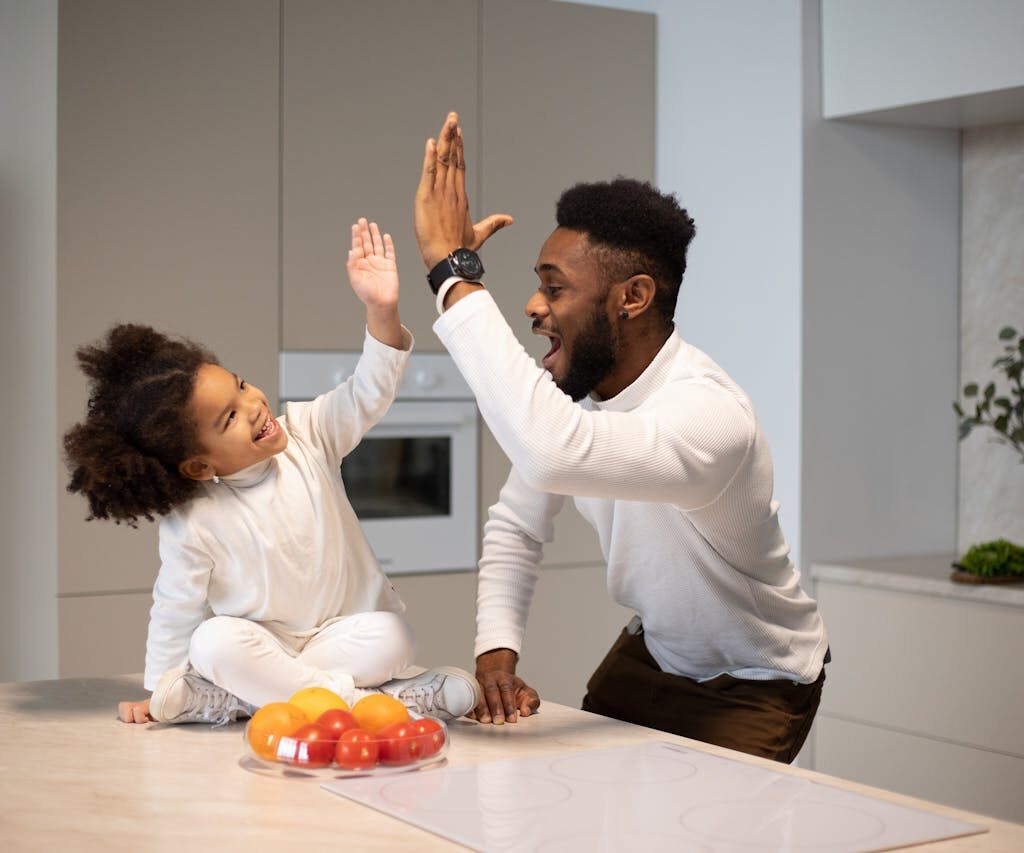Parenting comes with its fair share of joys and challenges, and communication is often at the heart of both. Good communication is more than just talking—it’s about creating an environment where your child feels seen, heard, and valued. Here are practical tips to help you foster meaningful conversations and strengthen the bond with your children.

Listen Actively
Listening is an art, and children thrive when they feel genuinely heard. Active listening means putting aside distractions—your phone, TV, or other tasks—and focusing fully on what your child is saying. Acknowledge their feelings, nod, and reflect back what they’ve shared. For example, say, “It sounds like you’re upset because your friend didn’t share today.” This validates their emotions and shows that you’re invested in their experiences.
Speak Their Language (Both Literally and Figuratively)
Understanding your child’s developmental stage is key to effective communication. With younger children, get down to their level—literally kneel or sit so you are eye-to-eye. Use simple language they can understand. For teens, respect their growing independence and choose words that don’t come across as judgmental. Phrases like, “I’m curious about how you feel about this” can open doors to deeper conversations.

Be Present and Available
In today’s busy world, carving out time for your child can feel difficult, but it makes a world of difference. Establish regular routines for connection, such as family dinners, bedtime chats, or weekend activities. These moments reassure your child that they are a priority in your life.

Foster an Open Atmosphere
Create a safe space where your child feels comfortable sharing anything without fear of judgment or punishment. Let them know they can trust you to listen without jumping to conclusions. If your child comes to you with a mistake they’ve made, resist the urge to criticize immediately. Instead, focus on understanding and problem-solving together.

Model Healthy Communication
Children learn by observing you, so demonstrate the kind of communication you want to see in them. Use “I” statements to express your feelings instead of blaming language. For instance, “I feel concerned when you don’t tell me where you’re going” fosters understanding better than “You never tell me anything!”
Be Patient and Persistent
Not every child opens up easily, and that’s okay. If they’re not ready to talk, let them know you’re there when they are. Phrases like, “I’m here for you whenever you’re ready to talk,” can create a sense of safety without pressure. Patience, paired with consistent effort, often leads to breakthroughs.
Adapt Your Style
Every child is unique, and what works for one might not work for another. Some kids may prefer conversations while doing an activity together, like cooking or driving, where the focus isn’t solely on them. Find what resonates best with your child and adapt accordingly.

Tackle Tough Topics Together
When challenging subjects arise—like peer pressure, bullying, or big life changes—approach them with openness and honesty. Use age-appropriate language and encourage dialogue by asking, “What are your thoughts on this?” Address their concerns while sharing your own perspective calmly.
Celebrate Small Wins
Lastly, remember that effective communication isn’t built overnight. Celebrate progress, however small. If your child comes to you with a minor problem, treat it with care; it’s a stepping stone to building their confidence in coming to you with bigger issues down the road.

Conclusion
Good communication is the foundation of a strong parent-child relationship. By listening actively, fostering trust, and remaining patient, parents can create an environment where their children feel valued and understood. Remember, it’s not about being perfect—it’s about showing up, trying your best, and learning together.
Parenting is a journey filled with learning curves, but every effort you make to connect with your child is a step toward a more fulfilling relationship. Start with small, intentional steps, and watch your bond flourish.

